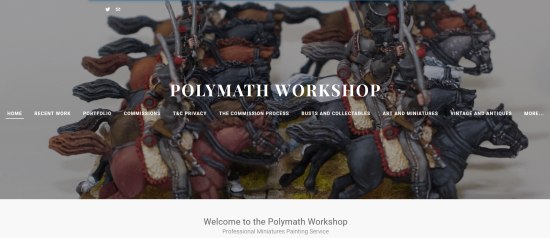Stage 7: The Markings
Skewbald:
This horse is going to be an overo-marked skewbald. I'm making its patches a reddish chestnut to bay colour. So the basecoat is Winsor & Newton Finity Red Iron Oxide. This paint comes out of the tube with the consistency of toothpaste and dries in three seconds flat, so it needs quite a bit of thinning to make it behave itself. The patches are applied with brush B and given ragged edges, like those in the guide photo I'm using.

Piebald:
The guide photo for this horse is a piebald with tobiano markings - big patches with smoothish edges rather than the more "speckly" appearance of the overo. The basecoat for the black patches is now applied in GW Chaos Black. I usually use this straight out of the pot, but rinsing the brush fairly frequently to prevent paint drying on it. Sometimes - as in this case - it can dry quite shiny if I haven't mixed it properly!

Tip: If you are going to put a rider on your horse, then don't bother with any fiddly detail on the portions of the horse's back that'll be obscured by the saddle and rider.
Stage 8: Finishing the Markings (and some other bits)
Skewbald:
A wash of Burnt Umber is applied to the markings on the skewbald horse.

Piebald:
GW Chaos Black is mixed with Winsor & Newton Neutral Grey. This is drybrushed (carefully!) onto the black markings to highlight raised areas.







